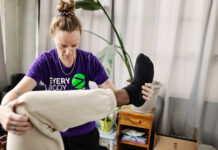
Concussions are, unfortunately, the talk of sports lately, regardless of the playing field or age group. Brain injuries occur at a rampant rate and the long-term effects are debilitating.
Fortunately, new technology is allowing sports organizations to keep track of these injuries in an effort to ensure players don’t fall through the cracks. This technology enables clubs to manage and oversee compliance of their individual safety policies. Concussion management software allows teams – from youth levels to pro – to document the injury, its severity, file each player’s history electronically and monitor follow-up. Sports groups across Canada are finding that the software is a godsend from an information-gathering perspective. There are currently 15 organizations currently on board, including hockey, lacrosse, volleyball and rugby.
Harrison Brown, CEO of the Vancouver-based HeadCheck Health, explained how the software they released in 2016 works: they gather the team or organization’s protocols and translate it into the software language culminating in an easy-to-use app., “ …then we monitor who’s adhering to the policy and those who are not.” Typically, parents, volunteers or coaches were executing the protocols and most times they weren’t qualified to do so. Most parents lack the ability to formally diagnose concussions, but they can accurately document symptoms of a suspected concussion and ensure the data collected follows the athlete when they go to see a medical professional.
Brent Ladds, president of the Canadian Junior Hockey League states: “I attended a seminar on concussions that the NHL put together last January and after sitting and listening, I felt we could be doing a lot more.” The CJHL recently sanctioned use of this software. “The safety activity gets monitored through the year (and successive years) so we have a global platform so that everyone is educated about the health of each injured player.”
Rugby Ontario has also committed to a similar program in the past 10 months. “All athletic therapists can manage the data and the baseline testing so that if something happens on the field or in training they can treat the situation immediately,” noted Paul Connelly, the organization’s high performance manager. “If they move on to the next level, say a national team, we can provide that information directly to that next team. It eliminates paper, which is a hassle. We sent four teams to Ireland this year and the head therapist had all the players’ information on his phone.”
There is now a program in place to integrate all the data from other software into one. A key objective is to get Canadian winter sports groups, like skiing and snowboarding, to follow suit. “We have spoken to ski and snowboard individual teams and also staff at (ski) mountains,” says Brown. “The issue is they’re not managed the same way as team sports, so there are logistical challenges. We predict in a couple of years, you’ll see emergency staff with ski and snowboard clubs all trained and accountable to the safety and health protocols of their respective sport.”
The agencies positioning this technology are hopeful that in the very near future more national sports affiliations like Hockey Canada and Soccer Canada will also commit to these programs.
















